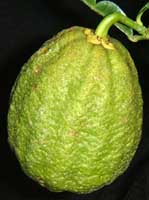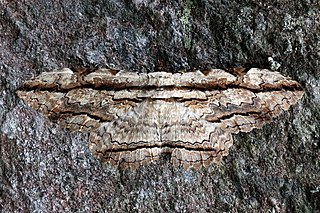
Lymantria dispar, the gypsy moth, is a species of moth in the Erebidae family. Lymantria dispar is subdivided into several subspecies, with subspecies such as L. d. dispar and L. d. japonica being clearly identifiable without ambiguity. Lymantria dispar has been introduced to several continents and is now found in Europe, Africa, Asia, North America and South America. The polyphagous larvae live on a variety of deciduous and coniferous trees and can cause severe damage in years of mass reproduction. Due to these features, the gypsy moth is listed among the world's 100 most invasive alien species.

The Sphingidae are a family of moths (Lepidoptera) called sphinx moths, also colloquially known as hawk moths, with many of their caterpillars known as “hornworms”; it includes about 1,450 species. It is best represented in the tropics, but species are found in every region. They are moderate to large in size and are distinguished among moths for their agile and sustained flying ability, similar enough to that of hummingbirds as to be reliably mistaken for them. Their narrow wings and streamlined abdomens are adaptations for rapid flight. The family was named by French zoologist Pierre André Latreille in 1802.

Brahmaeidae is a family of insects in the order Lepidoptera, commonly known as Brahmin moths. It includes species formerly included in the family Lemoniidae.

Brahmaea (Acanthobrahmaea) europaea, the European owl moth, is a lepidopteran from the family Brahmaeidae, in the subgenus Acanthobrahmaea.

Papeda or papaeda is the common name for a group of citrus native to tropical Asia that are hardy and slow-growing, and produce unpalatable fruit. Walter Tennyson Swingle segregated these species into a separate subgenus, Papeda, that included the Ichang lemon, yuzu, kaffir lime, kabosu, sudachi, and a number of wild and uncultivated species and hybrids. Recent genetic analysis shows the papedas to be distributed among distinct branches of the citrus phylogenetic tree, and hence Swingle's proposed subgenus is polyphyletic and not a valid taxonomic grouping, but the term persists as a common name.

Brahmaea wallichii, also known as the owl moth, is a moth from the family Brahmaeidae, the Brahmin moths, and one of its largest species. It is found in the north of India, Nepal, Bhutan, Myanmar, China, Taiwan, and Japan. The owl moth is nocturnal. The wingspan is about 90–160 millimetres.

Brahmaea is a genus of moths of the family Brahmaeidae.

Brahmaea certhia, the Sino-Korean owl moth, is a moth from the family Brahmaeidae, the Brahmin moths. It is found in the Korean Peninsula and China.

Acanthobrahmaea is a genus or subgenus of moths in the family Brahmaeidae. It was described by Sauter in 1967. When it is treated as a subgenus, it is part of genus Brahmaea. This moth is an endemic relict species that only occurs in the vicinity of the Monte Vulture in Italy.
Brahmaea celebica is a species of moth of the family Brahmaeidae first described by Lambertus Johannes Toxopeus in 1939. It is found on Sulawesi in Indonesia.

Brahmaea ledereri is a species of moth of the family Brahmaeidae first described by Alois Friedrich Rogenhofer in 1873. It is found in Turkey.

Brahmaea japonica, the Japanese owl moth, is a species of moth of the Brahmaeidae family. It is found in Japan.
Brahmaea loeffleri is a moth in the family Brahmaeidae. It was described by Stefan Naumann and Ulrich Brosch in 2005. It is found on Borneo.
Brahmaea paukstadtorum is a moth in the family Brahmaeidae. It was described by Stefan Naumann and Ulrich Brosch in 2005. It is found on Negros Island in the Philippines.

Thysania zenobia, the owl moth, is a species of moth in the family Erebidae. The species was first described by Pieter Cramer in 1776, and is native to North and South America and the Caribbean.
Citrus celebica, is a citrus species that grows in the northeastern Celebes and the southern Philippines. It is a small tree with inedible fruit.
Owl moth is a common name for various types of moths, mainly species in the family Brahmaeidae; it may refer to:
Garcinia celebica is an accepted name of a tree species in the family Clusiaceae. The Catalogue of Life lists no subspecies.
This page is based on this
Wikipedia article Text is available under the
CC BY-SA 4.0 license; additional terms may apply.
Images, videos and audio are available under their respective licenses.









